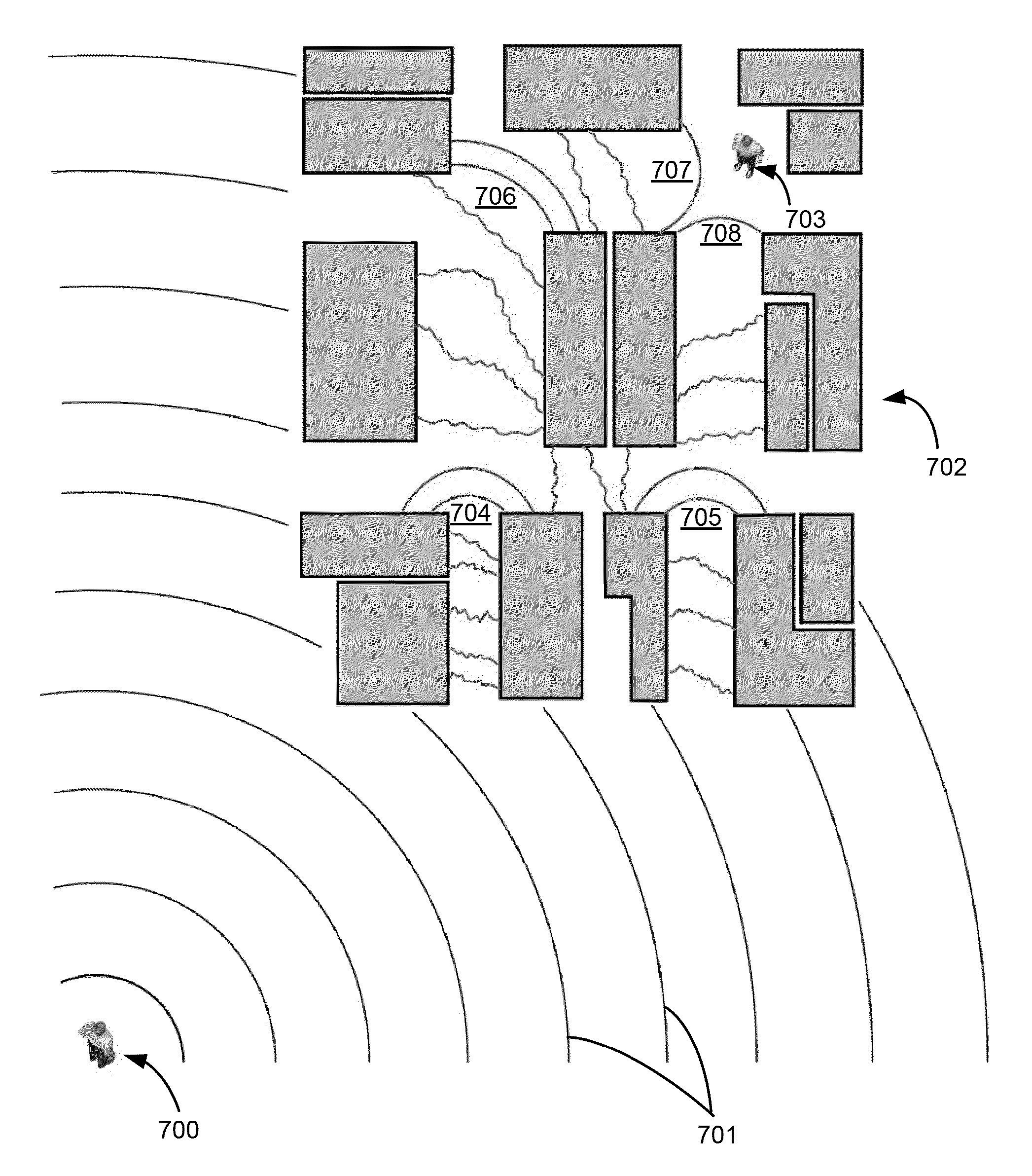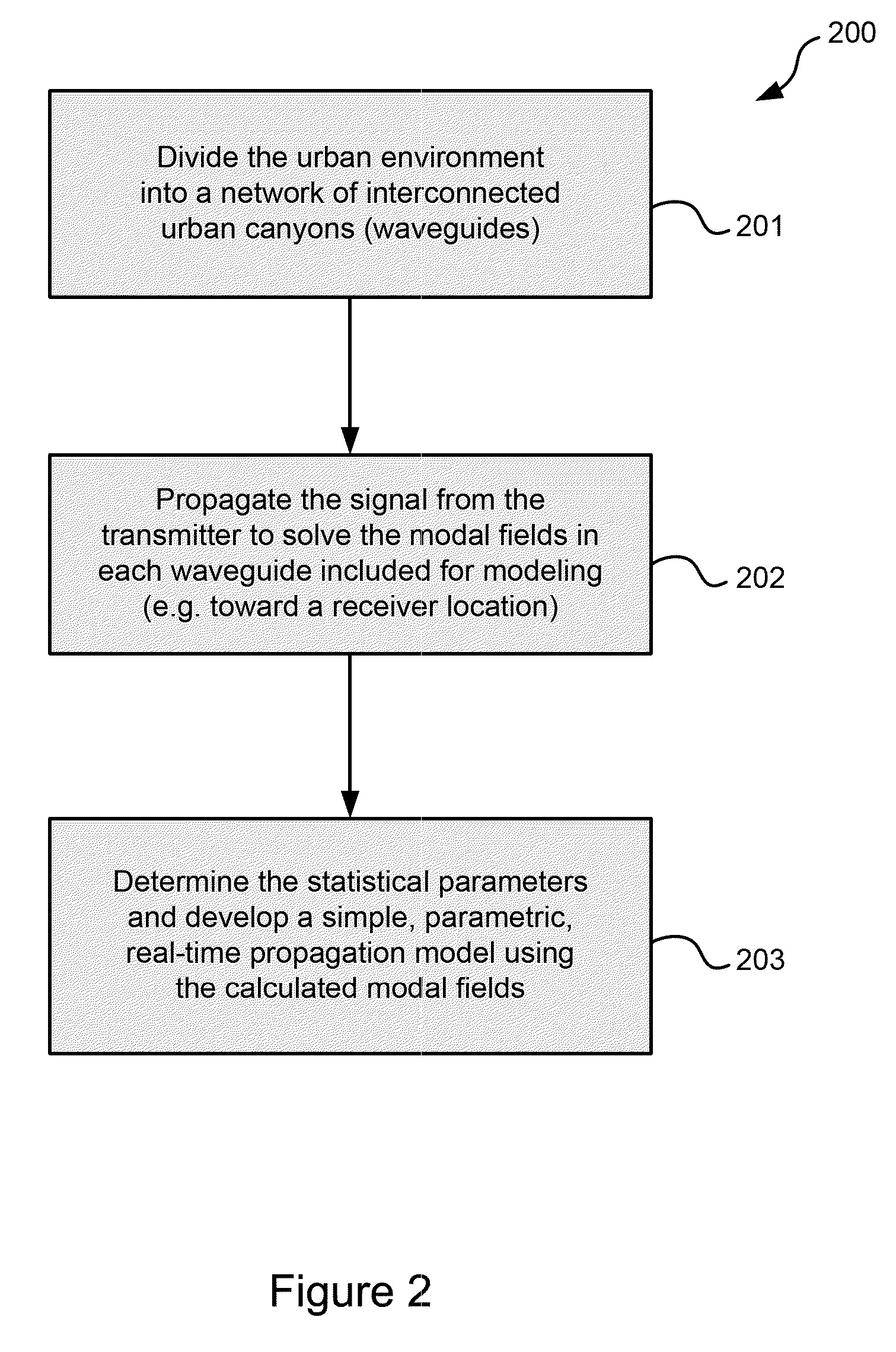Physics-based statistical model and simulation method of RF propagation in urban environments
a simulation method and urban environment technology, applied in the field of physics-based statistical and parametric models, simulation methods, systems of rf propagation in urban environments, can solve the problems of poor performance of wireless communication systems in urban environments, inability to accurately model the stochastic process, and inability to accurately extract building information, etc., to achieve the effect of accelerating the entire simulation cycle, reducing the cost of accurate building information extraction, and accurate modeling the stochastic process
- Summary
- Abstract
- Description
- Claims
- Application Information
AI Technical Summary
Benefits of technology
Problems solved by technology
Method used
Image
Examples
Embodiment Construction
[0029]Turning now to the drawings, FIG. 2 shows a schematic flow diagram of an exemplary overview method of the present invention generally indicated at reference character 200, for modeling / simulating electromagnetic wave propagation (preferably RF propagation) in an urban environment, and generating a parametric propagation model from the simulation. The flowchart is shown having three general steps shown at blocks 201-203. At block 201, the large complex urban environment is first divided or otherwise re-characterized into a network of interconnected urban canyon waveguides which are capable of being individually analyzed. At block 202, a signal is propagated (i.e. simulated propagation) from a transmitter through the network of interconnected waveguides (and preferably toward a receiver location) to calculate the modal field solutions in each waveguide that is included for modeling. In particular the propagation simulation is performed in the unit waveguides individually, with t...
PUM
 Login to View More
Login to View More Abstract
Description
Claims
Application Information
 Login to View More
Login to View More - R&D
- Intellectual Property
- Life Sciences
- Materials
- Tech Scout
- Unparalleled Data Quality
- Higher Quality Content
- 60% Fewer Hallucinations
Browse by: Latest US Patents, China's latest patents, Technical Efficacy Thesaurus, Application Domain, Technology Topic, Popular Technical Reports.
© 2025 PatSnap. All rights reserved.Legal|Privacy policy|Modern Slavery Act Transparency Statement|Sitemap|About US| Contact US: help@patsnap.com



